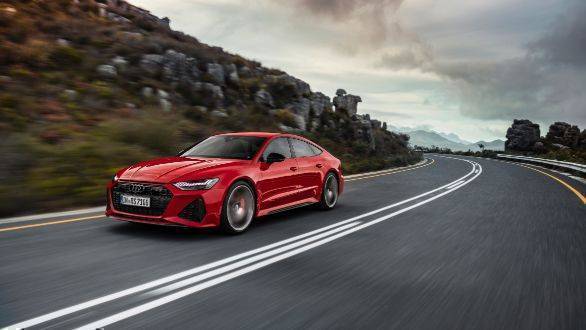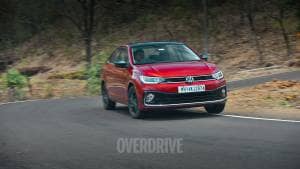Racing to the Road: Audi's RS cars
It may be a coincidence that we decided to jog our memory of Audi's RS (RennSport) cars just as the Ur Quattro turns 40. But it is quite a pertinent one. The Quattro, in its road-going form, wasn't as quick or as focussed as the RS-badged cars that followed. But the motorsport-derived technology, and its practical everyday implementation that the original Quattro espoused, have gone on to define Audi's performance sub-brand.

Intended to be a limited-run homologation special that qualified Audi to compete in the World Rally Championship, the Quattro went on to be a massive success both on and off the track. This was helped in no part by the car's dominance of the famed Group B category in the early 1980s, winning in 1983 and 1984. Three wins and a lap record at Pikes Peak sealed the car's legacy as one of Audi's greatest for good.
The namesake AWD system that the Quattro pioneered helped it win. But more impactfully, it changed performance cars for good. The hollow shaft that the Quattro AWD employed meant that such cars could be much lighter and sit lower to the ground. There was no need for a heavy transfer case or a second prop shaft anymore, to send power to both front and rear differentials. Many other carmakers have developed their versions of this tech since, but they've become a defining feature of Audi's RS models.

Another defining feature of these cars has been their engines. Bespoke units, derived from either motorsport projects or developed entirely from the ground up, are defining RS car traits. The Quattro had a part to play here too. Its 2.5-litre, 5-cylinder was the first of its kind ever made and has gone on to become an Audi trademark of sorts.
Ferdinand Piech, under whose watch the Quattro was developed, had a big hand to play in this unusual engine configuration. It debuted in the Audi 100 in 1976 but came into its own with the Quattro, where it was turbocharged. Eventually, this engine powered the Quattro through all of its competitive exploits. The thought was that a 5-cylinder could be the best of both worlds, the compactness and efficiency of a 4-cylinder and the power of a 6-cylinder. Having fallen out of favour by the mid-90s, Audi returned to this configuration in 2009 with the TT RS and the RS3.

All of these initiatives and their success on and off the track came at a time when the VW Group was working very hard to establish the Audi brand as its premier luxury offering. An effort that we now know was eventually successful. The Audi brand had been around in various forms since 1899 when August Horch established A. Horch & Cie in Cologne. After its storied pre-WWII Auto Union era, the brand had fallen into neglect and was in dire need of an investor. Ironically, Daimler-Benz came in to save the day in 1959, when it bought out the firm completely.

Daimler-Benz led the development of new 4-stroke engines and technology, and the Ingolstadt plant. But the Stuttgart firm's more upmarket focus at the time meant that Volkswagen took on a 50 per cent stake in the firm in 1964, which eventually grew to complete ownership. VW was more interested in the plant than in the brand, it needed more production capacity for the Beetle. But the promise shown by the car that would become the Audi 100, developed in secrecy by the brand's engineers, convinced VW to invest in a new line of cars. This led to the modern era of the Audi brands we now know. The Audi 100 and the Audi 80 are directly linked to cars from Audi's current line-up, the A8 and A6 respectively.
Having taken over as head in 1974, Ferdinand Piech set about transforming the brand into what we know it to be today. The performance car division and the motorsport exploits of the 1980s were a direct result of this.

Since its establishment, the performance arm which eventually became Audi Sport, has stayed true to the Audi brand slogan, Vorsprung durch Technik. Its exceptional success in endurance racing in the late 90s, Audi's 13 Le Mans wins is second only to Porsche, translated into real-world advancements like diesel engine tech, dual-clutch transmissions and the R8 mid-engined sportscar. The Formula E initiatives from 2017 onwards are expected to bear similar results as well. Audi has a head start over its German luxury peers in EV development, with the e-tron line of SUVs. This will soon expand to include a full range of sportscars and performance sedans.
The Greatest Hits

1994 - Audi RS 2
The first car to bear the RS badge is also the one that has since become the most revered. Co-developed with Porsche, Audi provided the basic Audi 80 underpinnings, the 5-cylinder engine and the Quattro system, which the Stuttgart carmaker then tuned with bits from its own line-up. The result was one of the most practical, technologically advanced fast cars of the time. It also established Audi Sport as the makers of the quickest and meanest estates out there.

2005 - R8
Now Audi doesn't classify this car as an RS model, but Audi Sport is in charge of the R8's production, which makes it as much of an RS as anything else here. When it debuted, this two-seater mid-engined sportscar was seen as the final piece of the RS puzzle. It took Audi endurance racing heritage, and the know-how from the newly-acquired Lamborghini to create what was simply the ultimate fast Audi. The car's pure mechanicals and how it made a V10-powered supercar so approachable made it an instant classic.

2010 - Audi RS6
The second-generation RS6 makes this list entirely because of its 5.0-litre twin-turbo V10. This motor made 580PS and broke the 300kmph top-speed mark with the Plus upgrade. This was the peak of Audi Sport's combustion engine technologies; the motor epitomising everything that the brand knew about engines up until this time. Downsizing would mean that the V10 was short-lived, being replaced by a twin-turbo V8 in the next RS cars.

2011 - Audi RS3 Sportback
In 2009, the TT RS was the first RS car to get a 5-cylinder, Quattro combination since the RS 2. But it was in the RS 3 from a couple of years later that this legendary pairing came into its own again. The first RS 3 was a pioneer of the now quite crowded, hyper hatch segment. Like a true RS, it found the right mix of speed, technology and everyday functionality. It's only very recently that peers like VW and Mercedes-AMG have managed to find a worthy answer to the RS 3.
The Ones to Look Forward To

At 7m 42.2s, the RS Q8 is the fastest SUV around the Nurburgring currently. It is also the ultimate version of the ultimate Audi SUV, which means Audi Sport has packed it to the rafters with tech. There's four-wheel steer, and a trick 48V electrical system. The 4.0-litre twin-turbo V8 packs close to 600PS and can do over 300kmph.

Audi RS Q3
At the other end of the spectrum is the RS Q3, a baby RS Q8 if you will. It still packs 400PS and 480Nm from the now proprietary 2.5-litre 5-cylinder turbo and is good for 0 to 100kmph in 4.5s. Also helping is the angry looks and the Sportback body style option.

Audi RS6
The definitive Audi RS car has recently been fully updated and is now quicker and sharper-looking than ever before. Hearteningly, it is now only offered in estate form but now comes with tech to sharpen up the driving experience further. There's a 48V mild-hybrid system too, in case the 3.8s 0 to 100kmph time, 600PS and the top speed of 305kmph hurt your conscience too much.

Audi RS7
Audi's next RS car for India will be the RS7. Now in its second generation, the RS7 brought Audi Quattro tech and RS performance to a new front with its four-door coupe styling. The new one is packed full of the latest tech, and carries much of the mechanical brilliance of the new RS6.
Starts Rs 2.07 Crore
3996cc
Automatic
600
800
-NA-














